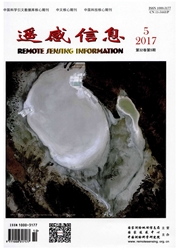

 中文摘要:
中文摘要:
本文总结了基于样点地面实测光谱分析和基于遥感影像的多光谱和高光谱定量化监测方法在土壤重金属污染中应用的优劣势,分析出现有研究数据和方法的不足与需改进之处,并指出整合多源数据和多变量方法用于连续动态监测并制图土壤重金属污染将是遥感定量化监测新的发展趋势。尺度的变化和定量遥感的不确定性影响土壤重金属污染遥感监测的精度。
 英文摘要:
英文摘要:
How to map the pollution quality and severity in an accurate,timely,and large scale manner has definitely been recognized as the crux of bringing the pollution under control.Remote sensing technology,with the monitoring advantages of wide coverage,expeditiousness,affordable price and suitable revisit frequency remains irreplaceable in monitoring large-scale soil pollution.In this paper,the advantages and disadvantages of monitoring methods for soil heavy metal pollution evaluation based on the measured spectral analysis of the samples as well as the quantitative detection by the multispectral and hyperspectral remote sensing imagery were summarized and the deficiency of the existing research data and methods and which need to be improved were analyzed.Finally,it pointed out that the continuous dynamic monitoring and mapping soil heavy metal pollution by the integration of multi-source data and multivariate methods will be the new development trend of quantitative monitoring via remote sensing technology.Scale changes in detection and the uncertainty of quantitative remote sensing affect the accuracy of remote sensing monitoring on soil heavy metal pollution.
 同期刊论文项目
同期刊论文项目
 同项目期刊论文
同项目期刊论文
 期刊信息
期刊信息
